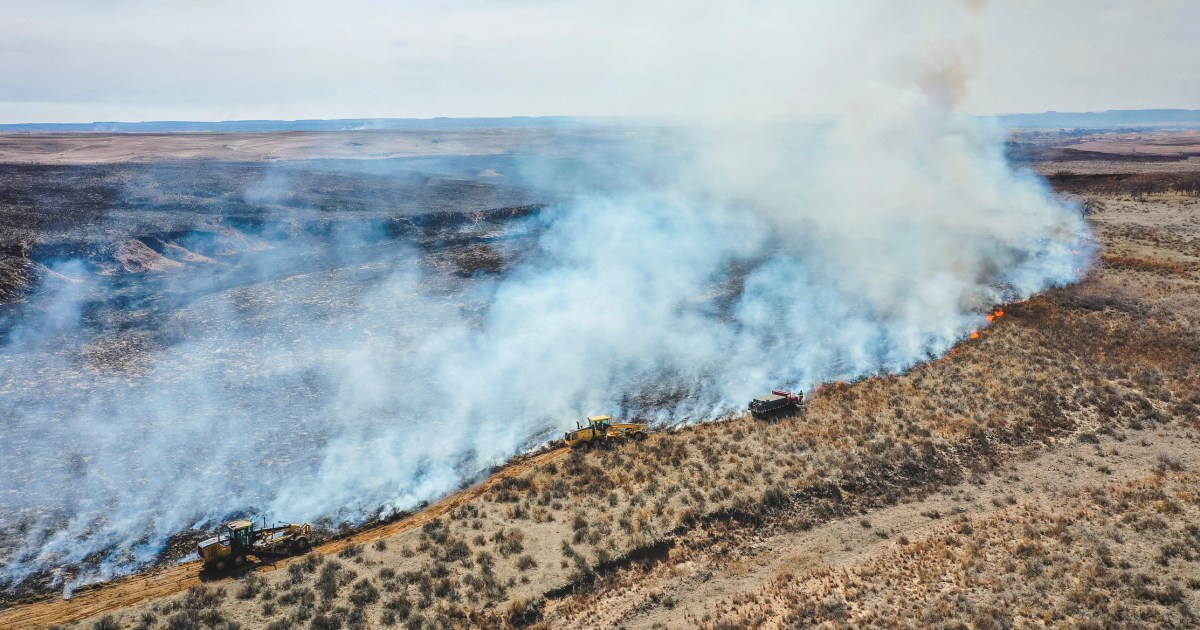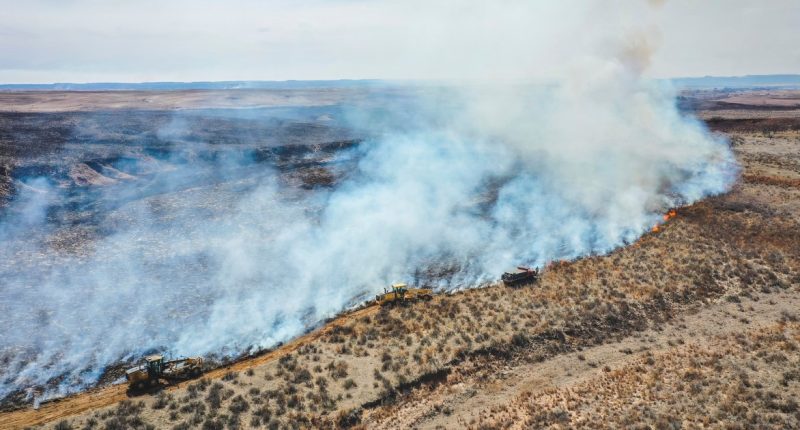
Fire season in Alberta, Canada, typically begins March 1. This year, the province officially declared the start of the season more than a week in advance, on Feb. 20.
More than 150 fires are smoldering in parts of western Canada while firefighters in the Texas Panhandle have spent over a week battling the largest wildfire in the state’s history — blazes that follow a pattern in recent years of wildfire seasons kicking off earlier than expected.
Wintertime fires are not altogether uncommon in these parts of the world, but the elements that fuel these winter wildfires are exacerbated by global warming, scientists say.
“What we’re seeing is more favorable conditions for fire as we continue to warm,” said Mike Flannigan, a professor of wildland fire at Thompson Rivers University in British Columbia, Canada. “The window for burning is getting longer, which means there’s more opportunities to burn.”
In western Canada, ongoing drought has fueled many of the fires burning in British Columbia and Alberta. But even in places where drought conditions have not been a major issue, climate change is likely having an effect.
In Texas, officials are investigating whether a utility company is to blame for starting the state’s recent historic fire, but a devastating combination of abnormally warm temperatures, dry grasses and high winds helped the blazes rapidly spread to engulf well over 1 million acres.
While global warming may play a role in creating ideal conditions for wildfires to ignite and spread, it’s much trickier to make direct links between climate change and individual events. This is because weather, landscapes and ecosystems all interact in a complex way to influence how fires behave in different locations.
The Texas Panhandle, for instance, has not had a particularly dry winter, said Nathan Gill, an assistant professor in the department of natural resources management at Texas Tech University.
“We’re not in a historic drought right now, so that’s not the climate story here,” Gill said. “But I think there is a climate story more related to the season when these conditions are happening.”
Wildfires are born of three key ingredients: vegetation (often referred to as “fuel”), some form of ignition (such as lightning strikes), and conducive weather in the form of hot, dry and windy conditions. “When all three come together, you get explosive wildfires,” Flannigan said.
In general, climate change is creating warmer conditions that can more easily dry out vegetation. When there’s less moisture in grass or shrubs, it’s easier for fires to start and grow.
Effectively, climate change is loading the dice, Gill said.
“We can’t necessarily say that one particular event was caused by climate change per se, but we can look at the broader picture and say conditions are changing and there might be a greater probability of something like this happening,” he said.
That will likely mean longer fire seasons and more wintertime blazes in the years to come.
“I expect we’re going to see more and more of this as we live in a more flammable world,” Flannigan said.
Source: | This article originally belongs to Nbcnews.com










